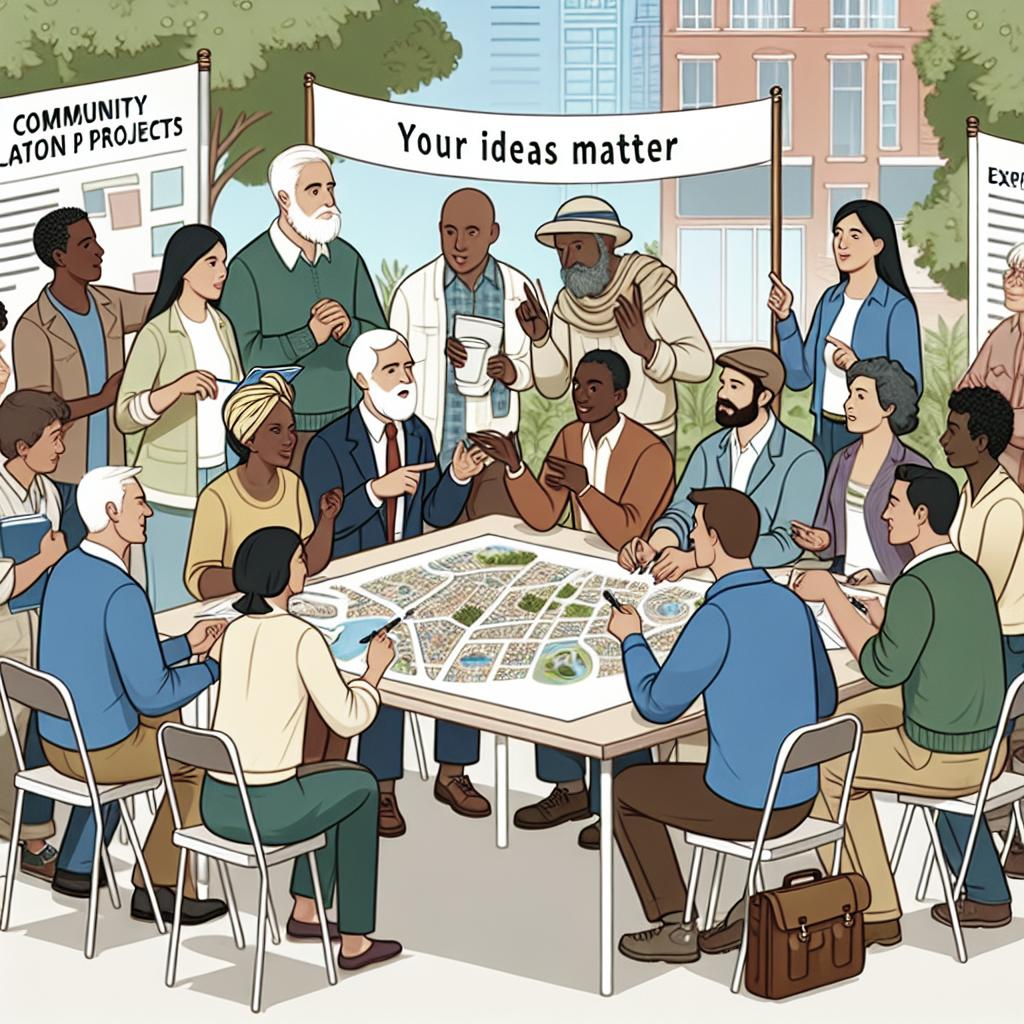<>
Ensuring community involvement in exploration projects is a complex but crucial process that serves to foster strong relationships, gain trust, and align project outcomes with local needs and aspirations. Engaging the community from the start, through proactive communication and inclusive engagement strategies, makes all the difference in delivering successful and sustainable projects. In this blog post, we will delve into key aspects of achieving effective community involvement, from setting the groundwork during the assessment phases to utilizing various engagement strategies. We will also highlight the importance of maintaining relationships throughout the project lifecycle and provide guidance on finding a forward path that keeps the community’s voices at the forefront.
Start with the Assessment Phases
The foundation for any exploration project starts with thorough assessment phases. These initial stages not only determine the feasibility and scope of the project but also set the stage for engaging the community. By involving the community early, project leaders can gather insightful local knowledge that can influence project planning and decision-making. Often, community members highlight potential issues and opportunities that might be overlooked without their input. Another critical aspect of the assessment phase is the development of a thorough stakeholder analysis. Identifying key community stakeholders—such as local leaders, business owners, and resident groups—can aid in understanding the social fabric of the area. Effective communication with these stakeholders helps establish trust and ensures that the community’s needs and concerns are addressed from the outset.
Maintaining Relationships
Maintaining relationships throughout the project lifecycle is critical for sustaining community support. Regular updates and transparent communication keep the community informed and involved. Hosting periodic meetings and providing updates via newsletters or social media ensures that community members feel valued and heard. This ongoing dialogue also helps in swiftly addressing any emerging concerns, preventing misunderstandings that could escalate into significant issues. Another vital element of relationship maintenance is responsiveness. Being open to feedback and ready to act upon it demonstrates respect and commitment to the community’s welfare. Building strong relationships with community members can turn them into project advocates who can further relay positive narratives about the project, contributing to a favorable public perception.
The Way Forward
The way forward involves a committed plan to adapt and grow with the community’s needs. Flexibility is paramount; as projects progress, unforeseen challenges and changes are inevitable. Having an adaptable approach ensures that the project can pivot based on community feedback and new information. Creating a feedback loop where the community feels their input directly affects project evolution is key. Additionally, setting up long-term goals for community involvement can sustain engagement beyond the project’s completion. This may include establishing community advisory boards or continued partnerships with local organizations. Such sustained involvement not only benefits the project but also fosters a culture of collaboration and mutual growth.
Community Engagement Strategies on a Building Project
1. Community Surveys
Community surveys are a fundamental tool for gauging public sentiment and gathering suggestions. Online surveys can reach a broader audience, while paper surveys may be more effective in areas with limited internet access. Surveys should be thoughtfully designed to capture a wide range of data, from demographic details to specific opinions about the project. Analyzing this data provides a clear picture of community needs and expectations, guiding the project in a direction that aligns with local interests.
2. Visioning Workshops
Visioning workshops bring together community stakeholders to collaborate on the project’s vision and goals. These collaborative sessions encourage participants to share their aspirations for the project and the broader community. Through facilitated discussions and creative exercises, visioning workshops help align the project’s objectives with the community’s long-term vision, ensuring that the final outcome supports communal aspirations.
3. Listening Sessions
Listening sessions provide a platform for community members to voice their concerns and ideas directly. Unlike formal meetings, these sessions foster a more relaxed environment where participants feel comfortable speaking openly. Conducted at various stages of the project, listening sessions can capture evolving sentiments and surfacing issues, allowing for timely and responsive adjustments to the project plan.
4. Groundbreaking Ceremonies and Open Houses
Groundbreaking ceremonies and open houses are public events that symbolize transparency and community involvement. These events invite the community to celebrate milestones and learn more about the project. Open houses, in particular, offer an inside look at the project’s progress through exhibits and tours, making the community feel a part of the project’s journey.
5. Updates During Design and Construction
Providing regular updates during the design and construction phases keeps the community engaged and informed. Updates can be shared through various channels, such as social media, newsletters, and community bulletins. These updates should highlight milestones, address any concerns, and inform the community about upcoming stages. Consistent communication builds trust and ensures the community remains supportive throughout the project’s lifecycle.
What Are Your Next Steps?
The next steps involve putting in place a structured framework that integrates community engagement at every phase of your project. This entails adopting best practices such as regular communication, inclusive decision-making, and maintaining a flexible approach to accommodate emerging community needs. Utilizing a range of engagement strategies as discussed fosters a robust relationship with the community, ensuring the project’s success and longevity. “`
| Phase | Key Activities |
|---|---|
| Assessment Phases | Involve the community early, conduct stakeholder analyses |
| Maintaining Relationships | Provide regular updates, ensure responsiveness |
| The Way Forward | Create adaptable plans, set long-term community involvement goals |
| Engagement Strategies |
|
| Next Steps | Implement structured framework for ongoing engagement |
“` Navigating the complexities of community involvement in exploration projects requires a dedicated and thoughtful approach. By combining early assessments, strong relationship maintenance, adaptive future planning, and diverse engagement strategies, you can create projects that not only succeed but also enrich the communities they touch.


